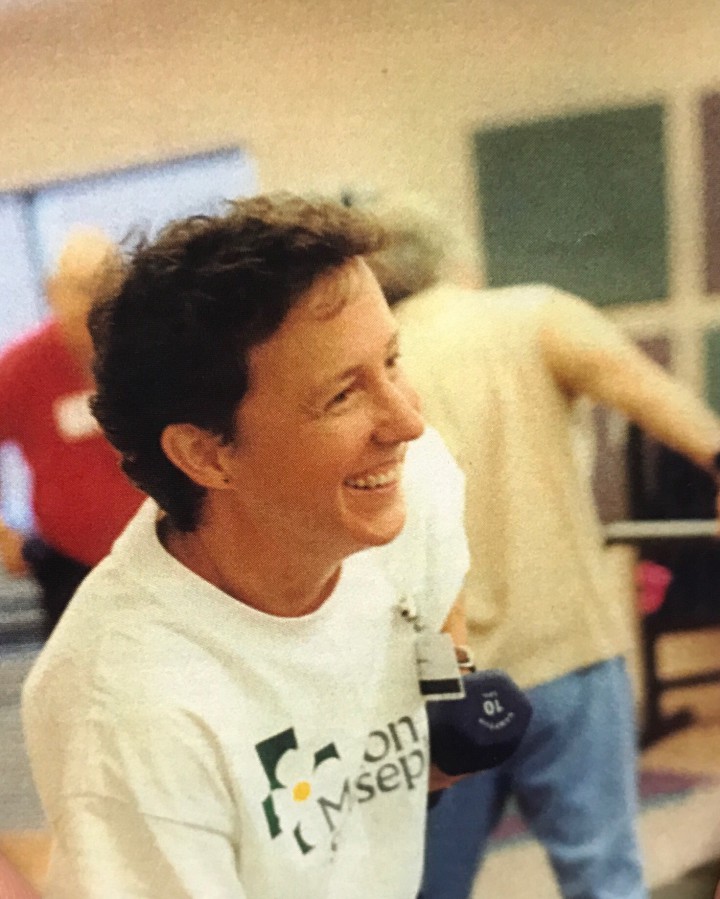Line dancing and heart disease — what’s the connection? At Mission Hospital’s cardiac rehabilitation program, line dancing is one fun option to get aerobic exercise.
Catherine Gibson, cardiac patient educator at Mission Hospital, says, “I was exploring ways of getting people moving that were a little bit more interesting and fun than just trudging on the treadmill and sitting on a bike.”
“We decided to give this line dancing a try,” says Gibson, who has a master’s degree in exercise physiology.
“I’m not a big expert [on line dancing]; I thought it would be a fun thing to do,” she says. To spice up the classes, Gibson recently attended an A-B Tech line dancing class. She planned to teach the new routines she learned as a part of Heart Health Month, which takes place every February. “It’s a hoot,” she says about line dancing.
Line dancing turned out to be very popular, she adds. “A lot of these folks enjoy dancing, and with line dancing, you don’t need a partner to do it, and it doesn’t just work on fitness, but it also enhances balance and thinking because you have to remember the steps, so there is a little cognition in there as well.”

Heart disease is the leading cause of death for men and women, according to the Centers for Disease Control and Prevention.
The Heart Path Cardiac Rehabilitation program sees about 400 people per year, according to Patrick Hickey, program manager at Mission’s Heart Path Cardiac Rehabilitation. The majority “are coming through because they had open-heart surgery, heart attack, stent, heart failure and stable angina,” he says.
Both Heart Path and the new the Ornish lifestyle medicine program at Mission are focused on educating cardiac patients about the importance of healthy diet, stress management and exercise for controlling and potentially reversing heart disease, says Hickey. These lifestyle and behavior-based approaches are evidence-based and have been shown to improve cardiovascular health among those with cardiovascular disease. They also prevent cardiovascular disease, especially in children, adolescents and young adults as they age, according to the American Heart Association’s 2016 report.
Megan Greathouse, a registered dietitian working with Heart Path and the Ornish program, says, “We do cooking demonstrations in our kitchen; for example, recently we took regular chili and did vegetarian chili. It was a supereasy switch. You can kind of tweak most recipes and adjust them to meet your nutritional needs.
“Try to stick to whole grains and make [meals] mostly plant-based. … If you can eat at least half plants on your plate, like fruits and veggies, you’re in good shape,” she continues.
Given that the heart is such a storehouse of emotion, the program also highlights the importance of social support for lowering stress levels, says Hickey. “Love and support are a huge part of the Ornish program as well,” he says. Patients in both programs “realize these people [other participants and staff] care about [them], and we’re caring about each other, and say, ‘This plays a huge role in how I am going to recover,'” he adds.
“It might sound sappy, but some people have a lot of rage and bitterness about having heart disease and ask themselves why it had to happen to them,” he explains. “You really do have to open up your heart and look at a lot of different things.”




As a graduate of HeartPath and a dancer, Let me say that Winnie would be proud of Ms. Gibson.
Staying away from refined carbs would be another good step forward and away from heart troubles.